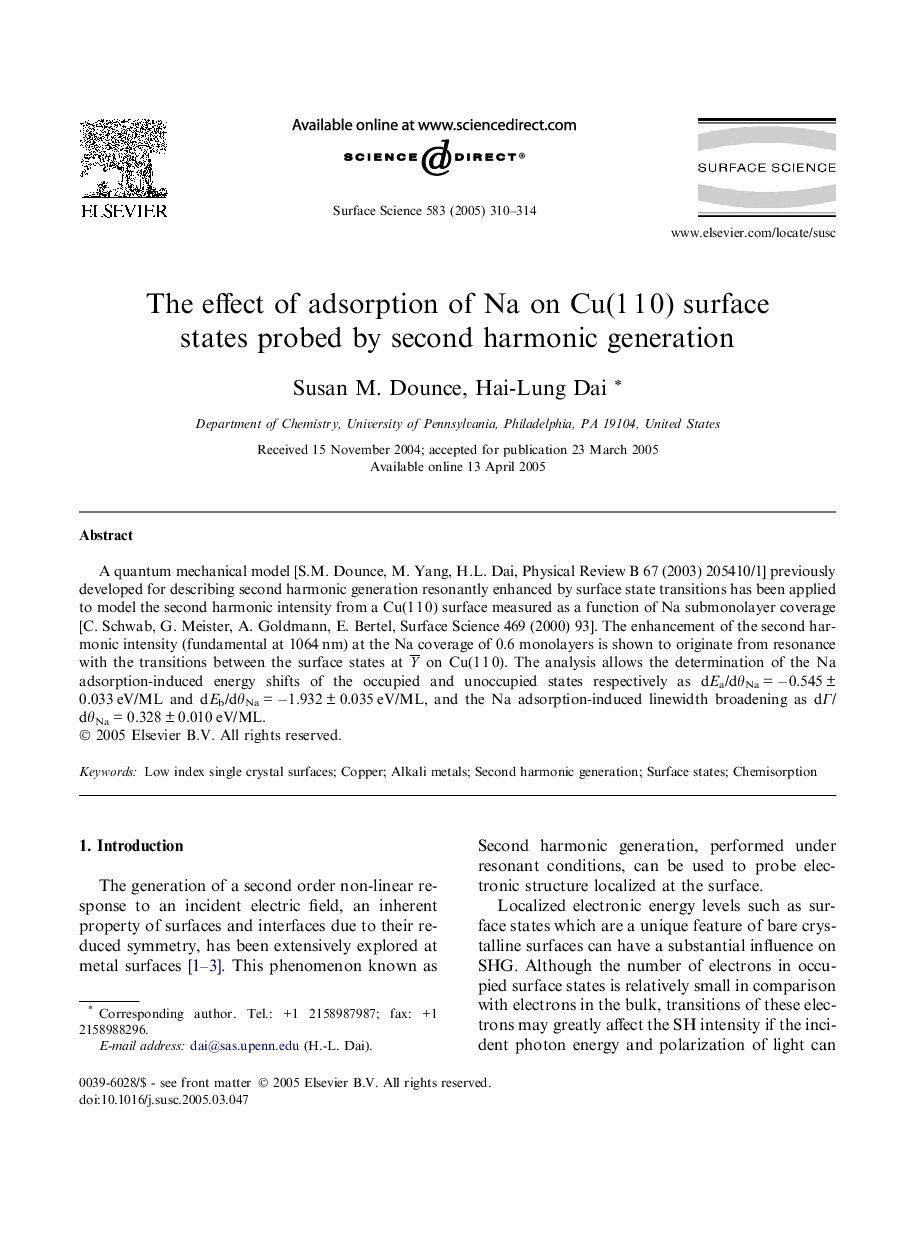| Article ID | Journal | Published Year | Pages | File Type |
|---|---|---|---|---|
| 9594741 | Surface Science | 2005 | 5 Pages |
Abstract
A quantum mechanical model [S.M. Dounce, M. Yang, H.L. Dai, Physical Review B 67 (2003) 205410/1] previously developed for describing second harmonic generation resonantly enhanced by surface state transitions has been applied to model the second harmonic intensity from a Cu(1 1 0) surface measured as a function of Na submonolayer coverage [C. Schwab, G. Meister, A. Goldmann, E. Bertel, Surface Science 469 (2000) 93]. The enhancement of the second harmonic intensity (fundamental at 1064 nm) at the Na coverage of 0.6 monolayers is shown to originate from resonance with the transitions between the surface states at Y¯ on Cu(1 1 0). The analysis allows the determination of the Na adsorption-induced energy shifts of the occupied and unoccupied states respectively as dEa/dθNa = â0.545 ± 0.033 eV/ML and dEb/dθNa = â1.932 ± 0.035 eV/ML, and the Na adsorption-induced linewidth broadening as dÎ/dθNa = 0.328 ± 0.010 eV/ML.
Keywords
Related Topics
Physical Sciences and Engineering
Chemistry
Physical and Theoretical Chemistry
Authors
Susan M. Dounce, Hai-Lung Dai,
